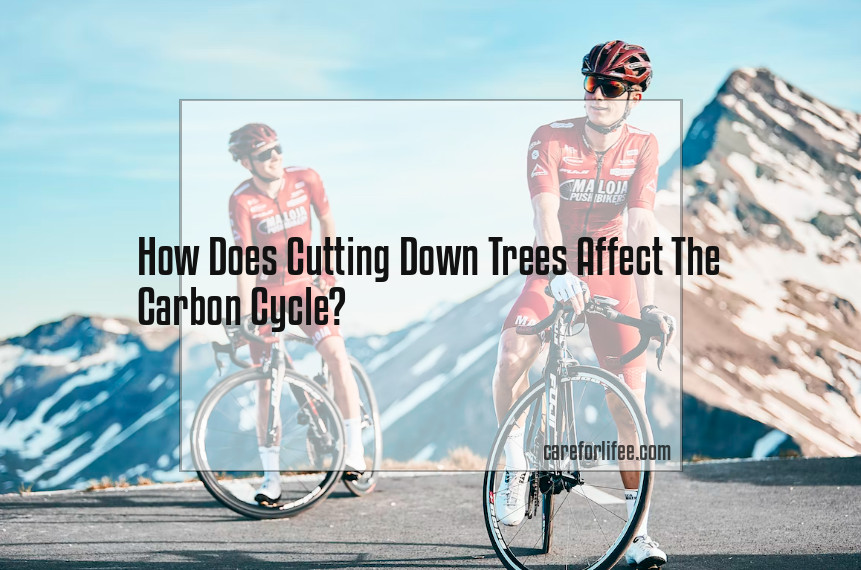How Does Cutting Down Trees Affect The Carbon Cycle?
Cutting down trees affects the carbon cycle by reducing the amount of carbon dioxide that is removed from the atmosphere.
The carbon cycle is the process by which carbon is exchanged between the atmosphere, land, and oceans. Trees play an important role in the carbon cycle by absorbing carbon dioxide from the atmosphere and releasing it back into the atmosphere through respiration. When trees are cut down, they no longer absorb carbon dioxide, which can lead to an increase in atmospheric carbon dioxide levels. This can in turn contribute to climate change by trapping more heat in the atmosphere.
How Does Cutting Down Trees Contribute To Climate Change?
Deforestation contributes to climate change by releasing greenhouse gases into the atmosphere.

Climate change is a global problem, and cutting down trees contributes to it in a number of ways.
For one, trees absorb carbon dioxide from the atmosphere and convert it into the oxygen we breathe. When we cut down trees, we reduce the amount of carbon dioxide that gets removed from the air, which contributes to the greenhouse effect and global warming.
Additionally, trees help to regulate the climate by providing shade and evaporating water. When we remove trees, the local climate can become hotter and drier. This can lead to more extreme weather events, such as heatwaves and droughts.
In the Amazon rainforest, for example, tree clearing has contributed to an increase in average temperatures and a decrease in rainfall. This has had a devastating impact on the local environment and the people who live there.
So, cutting down trees is not only bad for the environment, but it’s also bad for our health and the health of the planet. We need to be much more careful about how we use our forests and make sure we replant trees to help offset the ones we remove.
How Does Deforestation Affect The Carbon Cycle?
Deforestation affects the carbon cycle by decreasing the amount of carbon that is sequestered in trees.
When trees are cut down and burned, they release their stored carbon into the atmosphere as carbon dioxide gas. This disturbs the natural carbon cycle, where carbon is continually recycled between the atmosphere, land, and oceans. Deforestation thus contributes to climate change.
In addition, trees play an important role in the water cycle. They help to regulate the flow of water in rivers and streams, and their roots help to prevent soil erosion. When trees are removed, the water cycle is also disrupted.
For example, in the Amazon rainforest, trees play a vital role in the local climate. They help to regulate the humidity and temperature, and their leaves release water vapor into the atmosphere, which eventually falls back down as rain. If the Amazon rainforest is deforested, the local climate will change, which could have devastating consequences for the animals and plants that live there, as well as the people who depend on the forest for their livelihoods.
FAQ
How Does The Loss Of Trees Affect Carbon Dioxide Levels In The Atmosphere?
How Does The Loss Of Trees Affect The Climate?
Conclusion
Cutting down trees has a negative effect on the carbon cycle. Trees take in carbon dioxide and release oxygen back into the atmosphere. When trees are cut down, there is less carbon dioxide being taken in and less oxygen being released. This can lead to an increase in greenhouse gases in the atmosphere and a decrease in air quality.
Do you now understand how cutting down trees affects the carbon cycle? If you have any remaining questions, please let us know in the comments section below.







